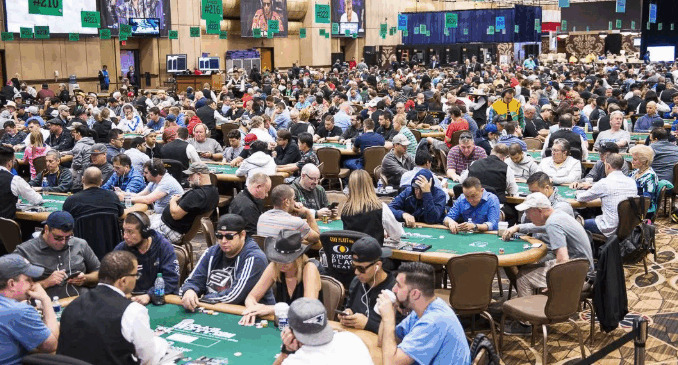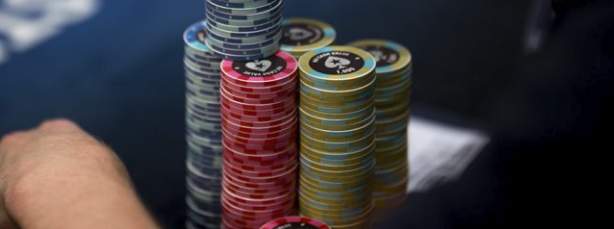
At first glance, tournament poker and cash games seem similar—at the tables, players play the same cards, make bets, compete for chips, and play pots. But in practice, they’re completely different formats, and even the rules, surprisingly, differ in places. To avoid misunderstandings and controversial issues, it’s especially important for beginners to know several mandatory and very important tournament poker table rules of conduct at the tournament table. This-Poker has identified five key rules for live tournaments that are often forgotten and overlooked by new players.
Large chips are always visible
There’s an unwritten rule: large chips must be placed at the front of the stack and clearly visible to everyone at the table. This is a matter of fair play and respect for your opponents.
Hiding large chips behind smaller chips is prohibited. Initially, you’ll likely receive a verbal warning, but persistent violations may result in a fine or, if ignored, removal from the table.
Also important:

Chips must be neatly stacked. A scattered stack makes it difficult to estimate your total chip count.
There’s no strict rule for stacking chips of the same denomination. You can stack chips in a multicolored tower—the main thing is that the stack is easy to visually assess.
👉 Tip: Before a break, place high-denomination chips at the bottom of your stack and take a photo of it—this will minimize the risk of losses.
Playing chips are not a toy for collecting, so to speak.
Tournament chips are in-game currency. Their number is strictly controlled, and any attempt to remove them from the room may result in disqualification.
Organizers are especially vigilant to ensure that excess chips don’t «disappear» or «appear.» Attempting to add them to the stack later is considered a serious violation and will result in the most severe penalties.
👉 Tip: If you want to keep a chip as a souvenir, you can ask the tournament director. Often, they allow you to keep the lowest denomination.
Eating outside of play
This rule is no accident: even a crumb or a drink residue can become a special «mark» on the cards. To avoid such incidents, food and drinks are kept away from the table.
However, no one prohibits snacking during long sessions. The main thing is to do this between hands, after you’ve finished the hand and are simply observing the game, and to place the food on a separate table nearby.
👉 Important to remember: the smell of food can irritate opponents. If your choice is durian or herring with onions, it’s best to check with the tournament manager to ensure it won’t cause complaints.
With the nuts on the river, only active action
If you have the nuts on the river and have the final say, you must bet or raise. Checking is prohibited in this situation, as it could be considered collusion.
Clear and understandable actions at the table
Every action or comment you make at the table matters:
If they say «all-in,» all chips must be in the center of the table.
If they say «2500,» that’s the amount that goes into play, even if you’ve only put one chip in, like that.
As soon as your cards are mucked (even by accident!), your hand is dead, no exceptions.
To avoid misunderstandings:
Protect your cards with a chip or a card sleeve (amulet);
Bet in one motion, not one chip at a time;
When raising with one large chip, be sure to say «raise» and state the amount of your bet.
The general rule is simple: your actions should be transparent and understandable to your opponents and the dealer. If you’re unsure, it’s best to state your decision out loud.
Here are the short conclusions we can draw: following these simple tournament poker table rules will not only save you from penalties and conflicts, but will also make the game more comfortable for everyone involved.
